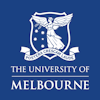|
When we get a nasty cut that becomes infected, or suffer a urinary tract infection, we expect to be able to treat it with antibiotics. But as more bacteria become resistant to these medicines, we’re left with fewer and fewer options.
The World Health Organization has warned that antimicrobial resistance is one of the biggest global health threats. By 2050, 10 million people are expected to die each year from drug-resistant infections.
So how did we get here? In the first part of our new series, Allen Cheng charts the rise and fall of antibiotics, and explains how our current overuse is putting us at risk.
Also today, Mark Blaskovich delves into the science and explains how exactly bacteria become resistant to antibiotics.
Later in the series we’ll bring you more on the potential solutions, including the quest for new antibiotics and other alternatives – and how we can use the antibiotics we have more wisely.
|

|
Fron Jackson-Webb
Deputy Editor and Senior Health Editor
|
|

Allen Cheng, Monash University
Antibiotics have been around for less than a century. But as resistant bacteria become increasingly difficult to treat, we risk a greater number of deaths from infections.
|

Mark Blaskovich, The University of Queensland
Resistance arises when bacteria are exposed to levels of antibiotics that don’t immediately kill them. Here’s how.
|

Peter Martin, Crawford School of Public Policy, Australian National University
It’ll now be a frugal Christmas in many Australian homes. But there is a glimmer of good news: if we do tighten our belts, rates could start to come down by as early as the middle of next year.
|

Katrin Meissner, UNSW Sydney; Deepashree Dutta, University of Cambridge; Martin Jucker, UNSW Sydney
Back when there were Arctic alligators and turtles, ‘polar stratospheric clouds’ kept their world warm. Research suggests these clouds contribute to the ‘missing warming’ in climate models.
|

Alison Atherton, University of Technology Sydney; Gordon Noble, University of Technology Sydney
If big money is going to invest in clean energy and technology, the rules have to be clear. Australia’s launch of a green finance strategy last week was a good start but there is further to go.
|

Jan Kabatek, The University of Melbourne; Michael Coelli, The University of Melbourne
Australian university applicants are sticking to their preferred fields of study, despite dramatic changes to student fees in 2021.
|

David Coghill, The University of Melbourne
After more than 700 submissions and evidence from 79 witnesses at three public hearings, the senate inquiry into ADHD diagnosis and treatment barriers has delivered its findings.
|

Rita Matulionyte, Macquarie University
When it comes to training high-performing AI models, the quality of the data is just as important as the quantity.
|

Ciara Smart, University of Tasmania
Like many other institutions, Scouts is caught in an awkward gap between tradition and modernity, as society grapples with colonial figures who were heroes to some, but not others.
|

Liz Evans, University of Tasmania
Sad Bad Girl novels combine the haplessness of Bridget Jones with the despair of Sally Rooney. Liz Evans assesses a ‘buzzy’ debut within the genre and a #MeToo novel that refreshingly defies categories.
|
Politics + Society
|
-
Liam Grealy, Menzies School of Health Research; Kyllie Cripps, Monash University
Last week, the High Court ruled the community of Santa Teresa could be compensated for the “distress and disappointment” caused by their poor housing. So how can such housing be better managed?
|
|
Health + Medicine
|
-
Cindy Towns, University of Otago; Angela Ballantyne, University of Otago
Many patients prefer single-gender hospital rooms. For women, this preference often comes from fear, while male patients are concerned with dignity.
|
|
| |
|
|
|
|
| |
| |

|
| |
| |
| |
Featured Events, Courses & Podcasts
|
View all
|
|
1 January 2023 - 7 October 2026
•
|

|
21 - 22 November 2023
•
Melbourne
|

|
23 November 2023
•
Parramatta
|

|
30 November - 1 December 2023
•
Melbourne
|

|
|
|
|
| |
| |
| |
| |
| |
|
|